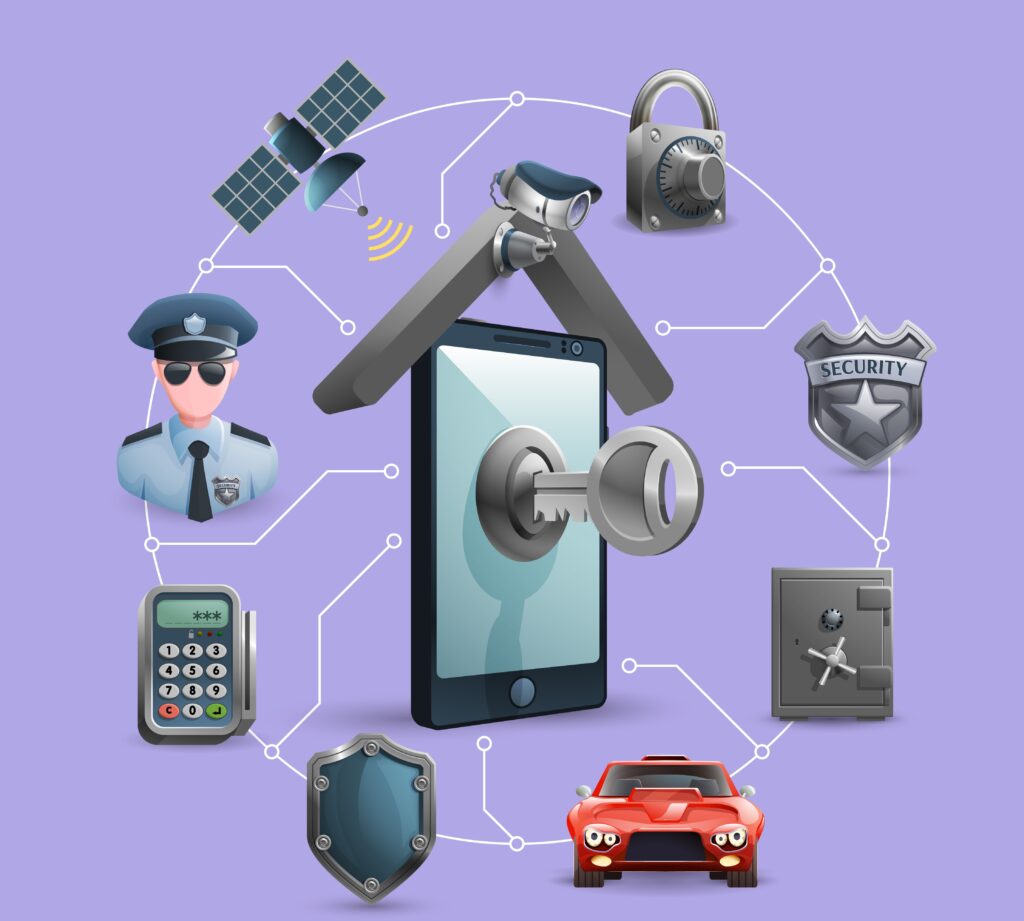
Introduction
From a behavioural security standpoint, deterrence leverages psychological factors to influence decision-making, discouraging criminals from attempting an attack. This article explores the deterrence factor in security programs, emphasizing its behavioural impact and how it can evoke a strong security posture.
The Strategies of 4D1R
A robust physical security program is built on a layered defence strategy, often summarized by the principles of Deter, Deny, Detect, Delay, and Respond (4D1R). Deterrence serves as the first and most critical element in security protection preventing threats before they even materialize. However, the effectiveness of security deterrence is actually drawn from the impacts of denial, detection, delaying and responsive strategies of the program. Deterrence factor is not standalone by itself, but derive from the strength from other strategies.
As example, the use of 4D1R strategies in a simple physical program for a commercial asset:
- Deny strategy: Basic perimeter security measure, such as fencing, walls, reinforced gates, or security post, send a strong deterrent signal that the facility is protected. These measures are often sufficient to discourage attacks from low-skill, low-motivation criminals. However, high-value assets may require enhanced denial measures, such as vaults or strongrooms;
- Detection strategy: if denial strategies failed, next level of protection will be detection of security breaches. The installation of security lighting, CCTV surveillance systems, and various perimeter intrusions detection alarms are designed for early detection. However, deploying patrolling officers or maintaining static observation posts remains essential for identifying and detecting irregularities. Capability of successful detection poses a strong security deterrence;
- Delay strategy: Delaying measures taking place to increase the effort, skill, and time required to breach a security system. For example, raising the height of a fence or wall forces intruders to use tools or assistance to climb over it, while a high-security door with advanced locks demands more time and expertise to defeat. Prolonging the attacks will increase the probability of detection. These delaying strategies should be applied not only to slow down an attack but also to hinder retreat, extending the response time available to security team;
- Respond strategy: A comprehensive physical security program must incorporate response strategies, in the event security attacks is detected. Effective response procedures demand swift and coordinated actions, underscoring the importance of proper training, coordination, and communication.
Key Psychological Effects of Security Deterrence
1. Risk Perception and Cost-Benefit Analysis: Humans are generally loss-aversion, fear losses more than the desire gains. Deterrence increases the perceived costs in term of likelihood of punishment, relative to the potential rewards. A thief may avoid a house with visible CCTV cameras, house alarm and guard dog, simply because of higher risk of being detected or caught.
2. Fear of Uncertainty: In psychology, it refers to strong anxiety or fear when facing situations where outcome is not predetermined. People prefer predictable outcomes rather than uncertainty. Unknown itself represent risk. In daily operations, introduce randomisation as surprise element into security patrolling interval, route or frequencies will disrupt the predictability, and enhancing deterrence factor.
3. Security Superiority: Maintain visible stronger protective posture than surrounding facilities will put yourself better off than others. Highly motivated criminals are constantly seeking vulnerable targets, and this strategy ensures your assets remain a less appealing option. In essence, by establishing superior security measures compared to others in the vicinity, you deter potential threats, criminals will likely opt for easier targets instead.
4. Visible Security and Panopticon Effect – Ensure all security measures are highly visible. On top of physical protection such as CCTV cameras, displaying of “Warning Signages” or Notices (24/7 CCTV Surveillance) at strategy location will elevate the sense of security. This is so-called “Panopticon Effect”, tricking people falsely believing they are constantly being monitored, while actually they are not, and impossible to do so.
5. High Security Awareness: most importantly, the security personnel’s high level of situation awareness plays a vital role in projecting a strong security aura and strength. A skilled security guard remains highly alert, focused, and observant at all times, capable of detecting irregularities or potential threats to enable immediate intervention. As example, in crowded spaces, a visibly attentive security officer scanning the area by looking for any suspicious behaviour serves as a powerful deterrent to would-be criminals. Vigilance security personnel may capable of detect any abnormal behaviour or things out of place, and take prompt investigation or intervention. As example, upon seeing a suspicious vehicle parked by roadside, a security guard may “challenge” it by tactfully approaching to offer assistance while discreetly gathering additional information through strategic questioning.
As explained above, psychological deterrence plays a pivotal role in any effective physical security program. Successful prevention strategies depend not just on installing optimal security equipment, but equally on projecting a formidable sense of security that elevates criminals’ perception of risk.

No comment